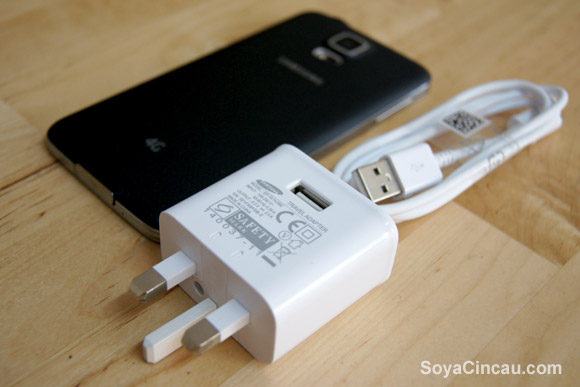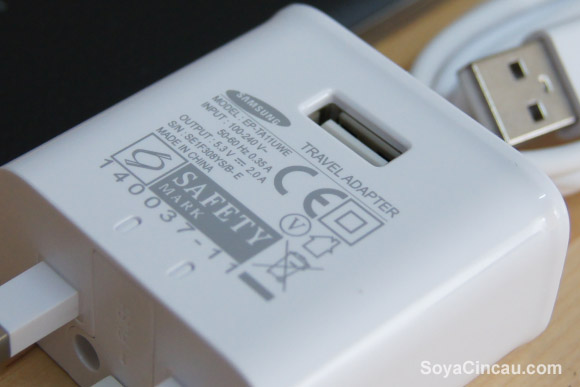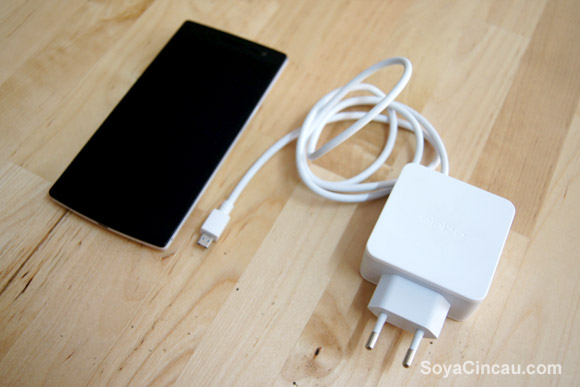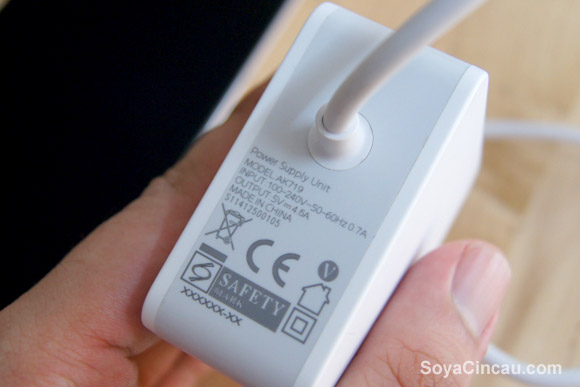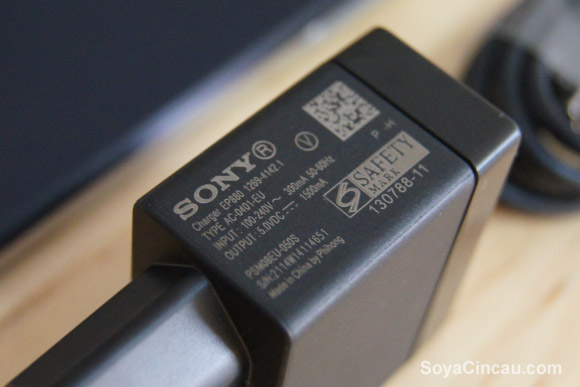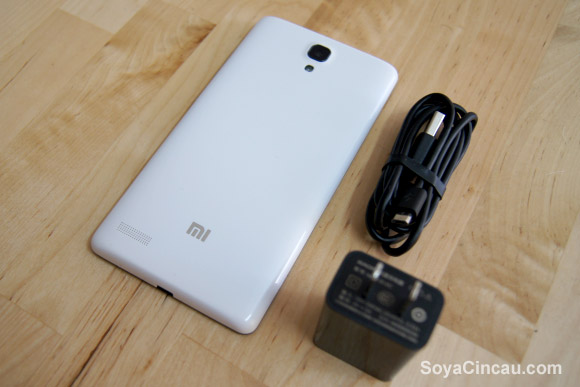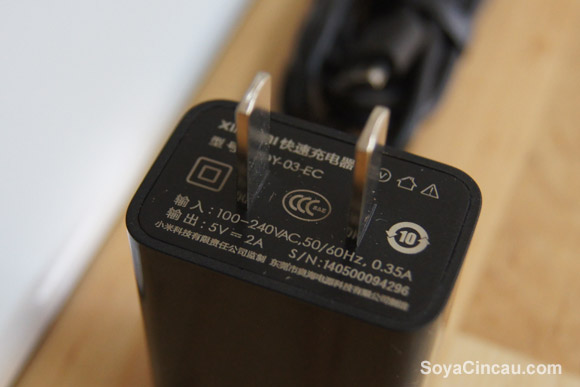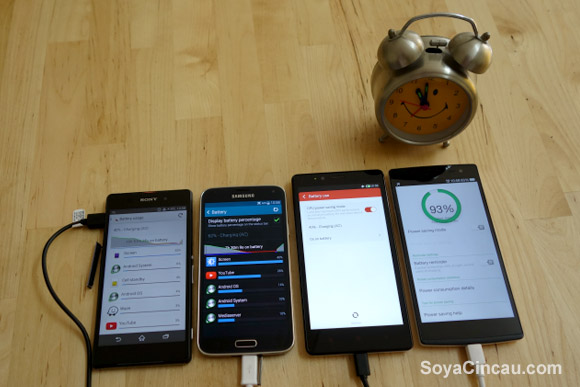Smart phone these days are getting bigger in size and so is their appetite for power. If you glance at today’s flagship models, most of them are having batteries with an average of 3,000mAh capacities. Just two years ago, these are considered huge like the Motorola RAZR Maxx and the Samsung Galaxy Note II. Obviously with a larger battery, it takes longer to charge your smart phone up to 100%.
To address your waiting time problems, the new Oppo Find 7 comes with a unique charging feature called VOOC. This is their proprietary rapid charging technology which charges up 4X faster than conventional chargers. According to Oppo, it is capable of getting you from 0% to 75% battery life in just 30 minutes, while a quick 5 minutes charge is sufficient enough to supply 2 hours of talk time. To enable VOOC charging, you’ll need to charge the Find 7 with a special VOOC charger that comes with an integrated 7-pin microUSB cable.
On most smart phones, you’ll normally get a “fast charger” that pushes an output of 2.0 Amps. For VOOC, its charger pushes an epic max output of 4.5 Amps. That’s more than double and Oppo reckons that they have implemented its necessary fail safe protection layers to avoid overheating, overloading and long term battery degradation. When plugged in, the charger won’t charge 4.5 Amps throughout as it takes a multi-step approach as the battery level increases. This means it will charges up fairly quickly from 0% and then gradually slows down to 3.5A, followed by 2.0A and eventually to 1.0A as the battery is near to a full charge. To find out if VOOC is any better than other smart phone chargers, we’ve compared it against the Samsung Galaxy S5, Xperia Z2 and the Redmi Note.
For this set up, we’ve used the original chargers and cables provided out of the box of the Galaxy S5, Xperia Z2 and Redmi Note. The Xperia Z2 and the Redmi Note have the biggest battery in this comparison with a 3,200mAh unit. This is followed by the Oppo Find 7’s 3,000mAh capacity battery and the Galaxy S5 at 2,800mAh. The Redmi Note and Galaxy S5 are supplied with a 2.0 Amp charger, while the Xperia Z2 came with a smaller 1.5 Amp unit.
Before we start the test, all 4 devices are completely drained out of their batteries with non-stop playback of videos and music until the devices could not be switched on. For consistency of charging, all four devices are being set to airplane mode. This is to maximise its full charging potential without any usage of WiFi or Mobile Data.
After 10 minutes of charging, we switched on all 4 devices and we found that the Oppo Find 7 is already far ahead with 27% charge. The other 3 are still far behind with the Galaxy S5 at 14% followed by Xperia Z2 at 9% and Redmi Note at 7%. When we crossed slightly more than 30 minutes later, the Find 7 has already reached 75% while the Galaxy S5 has just reached its 40% mark. At this point, the Xperia Z2 and Redmi Note have finally reached its 25% level.
Conclusion
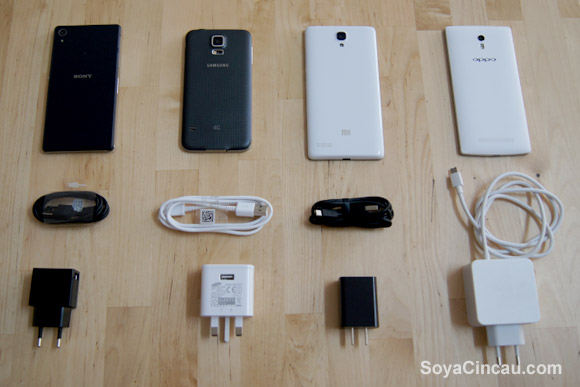
Overall, we are blown away with the speed of its VOOC charging feature especially where it charges up to 27% in the first 10 minutes. While it lived up to its promise of 75% charge within 30 minutes, a full charge would take slightly more than an hour as the Multi-Step charging has kicked into lower output in the final few bars. At 92% percent charge, the Find 7 shows an estimated 16 minutes time for a full charge. Nevetheless, the VOOC charging feature is definitely life saver especially you wake up in the morning to find that your phone wasn’t charged overnight.
The only thing to note is that you’ll need the original VOOC Charger to enjoy faster charging. If we have one complaint, the cord on the original charger is quite short at about 1 metre and being integrated with the head unit, you can’t replace it for a longer one. If you use your standard micro USB cables on your laptop or power banks, it will still charge but at slower speeds. For those without access to wall sockets, Oppo does make VOOC Power Banks with higher 3.5A output but too bad they are not offering it here in Malaysia at the moment.
Oppo Find 7 vs Galaxy S5 vs Xperia Z2 vs Redmi Note Chargers & Cables
